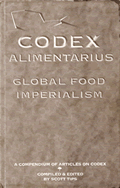NHF's
HARD STAND ON NUTRITION AT CODEX PAID OFF
PART 1 of 2
By
Attorney Scott Tips, JD
December 26, 2015
NewsWithViews.com
When you and I were six years old, six years was literally a lifetime. As we all have grown older, each year has come to represent an increasingly smaller percentage of our lives and thus seems to pass more rapidly than when we were youngsters. One year at age 6 represents nearly 17% of our life; but at age 60, it is only 1.6% of our life. At age 100, one year will only be 1% of the lifetime of anyone living that long. Perversely, then, Time appears to accelerate.
 Bangladesh,
NHF, and Swiss delegates speaking
Bangladesh,
NHF, and Swiss delegates speaking
So, although my hard-fought stand on behalf of the National Health Federation (NHF) and true nutrition back in 2009 at the Codex Committee on Nutrition and Foods for Special Dietary Uses (CCNFSDU) meeting held in Dusseldorf, Germany seems so long ago, the time has also passed very quickly.
Nutrient Reference Values
Those who have been following the NHF’s efforts at Codex since the mid-1990s will recall that at that 2009 Codex nutrition committee meeting, the NHF singlehandedly launched the opposition that had stopped the Australian delegation and others from drastically “dumbing down” the Nutrient Reference Values (NRVs) for vitamins and minerals.[1]
Incredibly, Australia and its supporters had actually proposed that lower NRVs be adopted for most vitamins and minerals, including Vitamin C. For example, the “Proposed Draft Additional or Revised NRVs for Labelling Purposes in the Codex Guidelines on Nutrition Labelling” suggested reducing the Vitamin-A NRV from 800 micrograms down to 550 micrograms, Vitamin C from an already-abysmally-low 60 milligrams down to 45 milligrams, thiamin from 1.4 milligrams down to 1.2 milligrams, niacin from 18 milligrams down to 15 milligrams, magnesium from 300 milligrams down to 240 milligrams, and so forth.[2]
These values are already at subsistence levels, and most persons need far more than the miserable amounts that Codex – trapped in its world of two-dimensional nutrition – would parsimoniously dole out to them in order to enjoy optimal and robust health. Yet Australia and its supporters were so fixated on reducing the values even more that they had blinded themselves to the real science showing the absolute need for more nutrient intake, not less.
Fortunately, thanks to NHF and its key supporters India and Iraq – as well as the surprising but welcome decision of retiring CCNFSDU Chairman Rolf Grossklaus – at the 2009 meeting, the Committee wisely chose not to move forward with the proposed NRVs and instead held them back for further review and study. Importantly, the momentum for reducing the NRVs was killed and the process slowly restarted.
Fast Forward to 2015
Five CCNFSDU meetings have passed between the 2009 and 2015 meetings as the Committee haltingly crept through the NRV agenda. Last year at the Committee meeting in Bali, we saw the NRV for Vitamin C actually increased by 220%. This year the Committee met in Bad Soden, Germany, during Thanksgiving week, and was to have finalized establishing NRV levels for its last list of vitamins and minerals.[3]
Unlike previous years, the 2015 discussion was not ever seriously about lowering the NRVs but was about either raising them or at least keeping them at the same level as before. Keep in mind that the NRV levels are not set at optimal health levels because Codex is not concerned with optimal health. Instead, the levels are set at minimal subsistence amounts, just enough to keep a person a few steps ahead of the grave.
With that in mind, NHF still enjoyed a tremendous success in keeping most of the NRV levels out of the gutter. Certain countries – such as South Africa, Indonesia, Bangladesh, and Malaysia – were extraordinarily great at consistently supporting higher and healthier NRV levels. Unfortunately, after the first day, Bangladesh’s able spokesman, Dr. S. Roy, was muzzled on a technicality and could no longer speak out for true nutrition. But, by then, the NRV issues had been discussed.
The NRV for Vitamin A was the first up for discussion. The Electronic Working Group (of which NHF was a member) recommended to the Committee that the original value of 800 (2666 IUs) micrograms per day be maintained, but the European Union (EU) immediately objected that it should be lowered to 700 mcg/day. New Zealand, Norway, and Brazil supported the EU, while South Africa, Morocco, Chile, Togo, Uganda, Ghana, Uruguay, China, Kenya, Canada, Malaysia, the United States, Mali, Nigeria, Egypt, and the NHF argued that the 800 mcg/day value be kept (with NHF arguing that the value should be more than doubled). In light of the overwhelming support for the higher value, the CCNFSDU Chairwoman Pia Noble asked the Committee for consensus on the higher value and everyone agreed.
Vitamin D was next. Six years ago the Committee was going to leave the NRV for Vitamin D at an insulting 5 micrograms per day (200 IUs/day). Now, in a very scary move for many Codex members, some Committee members were suggesting that the NRV be inched up to 10 mcg/day (400 IUs/day) or even a breath-taking 15 mcg/day (600 IUs/day). Completely ignorant of the latest nutritional research showing that 4,000-5,000 IUs/day of Vitamin D should be the standard, and ignoring NHF’s written comments showing that the Institutes of Medicine (IOM) had miscalculated the NRV for Vitamin D which by its own standards should be 8,666 IUs/day, the Committee actually had delegations arguing for retaining the 200 IUs/day level (Senegal, Togo, India, Uganda, and a few others). Others, such as Canada, the United States, Iran, Turkey, Uruguay, Indonesia, Chile, and South Africa, argued for the highest (15 mcg/day) of the proposed three levels, with the NHF of course arguing strongly for a level many times higher; but in the end, the Chairwoman decided that the Committee should wait for the forthcoming European Food Safety Authority opinion on Vitamin D levels, due out in February 2016, with the current value of 5 mcg/day being retained until the next meeting.
Vitamin E followed in quick succession. It had taken the Committee thirty minutes to reach a decision on Vitamin D; it took another 27 minutes to discuss the Vitamin-E NRV. The rush was on and it followed an all-too-predictable path with many delegations arguing for a higher (albeit still too low) value but the Chairwoman overruling them so as to set the value at its lowest level. In this case, Australia, Senegal, and the World Health Organization argued for the lowest value of 9 mg/day (about 13.5 IUs/day) while the EU suggested the middle ground of 12 mg/day (18 IUs/day) as “a safe landing space.” Too many others caved and went for the safe “middle ground” of 12 mg/day even though a preference was expressed for the highest value of 15 mg/day (22.5 IUs/day). These were Indonesia, Bangladesh, South Africa, Malaysia, Indonesia, Russia, and the International Alliance of Dietary Food Supplement Associations (IADSA). NHF alone argued that these three values were all significantly too low. Despite the preponderance of delegations in favor of the 12 mg/day NRV for Vitamin E, the Chairwoman completely ignored them in her rush to dive for the lowest possible value of 9 mg/day. So, the NRV was set as the Chairwoman desired and not as the Committee had wished. Codex “consensus” in action!
Next came the NRV for Iron. For 12 years at Codex, NHF had consistently argued that Iron overload is a greatly unrecognized health problem and that any NRV for Iron must be differentiated by sex and not averaged between men and women as averaging would shortchange women and overload men (and post-menopausal women) with iron. But why should Codex change now? Ignoring NHF’s impassioned plea, the Committee accepted the Electronic Working Group’s recommendation to set an NRV for Iron at 14 mg/day and 22 mg/day depending upon the absorption rate. That took a mere ten minutes for the Committee to butcher male and post-menopausal female health.
Not content with the damage done to human health just minutes earlier, the Chairwoman then launched the Committee at Magnesium. Remember, the CCNFSDU had wanted the NRV for Calcium set at a silly 1,000 mg/day while proposing that the NRV for Magnesium be lowered from 300 mg/day to 240 mg/day. NHF had stopped both back in 2009, but Australia and Ms. Noble had succeeded in 2014 in getting the high level for Calcium approved by the Committee. Keeping in mind that Calcium and Magnesium are twin macro-minerals and that nutritional science has generally set their ratio at from 2:1 to 1:2, taking the worst case scenario into account would mean that with an NRV of 1,000 mg/day already set for Calcium, the CCNFSDU would then have to set the NRV for Magnesium at no less than 500 mg/day. By current nutritional standards, the Committee had boxed itself in when it pre-set the NRV for Calcium. But since when did good nutritional science ever deter this Committee?
Of course, I argued for NHF and countless consumers that the NRV for Magnesium must be set at no less than 400-500 mg per day. Yet the choices presented to the Committee were 300 mg/day, 310 mg/day, and 365 mg/day. Ms. Andiswa Ngqaka of South Africa strongly and ardently argued for a level higher than 365 mg/day but faced with only three choices could then do nothing other than support the 365mg/day level. Bangladesh agreed. The Chairwoman, though, somehow intuitively smelled Committee support for the 310 mg/day value and so it was set at that amount. So much for “science based” standards, or even basic consensus!
The day’s end was drawing close so we quickly rushed through Phosphorus (NRV set at 700 mg/day “in a spirit of compromise” and not science), Copper (NRV set at 900 micrograms/day instead of 1.5 mg/day), and Chromium (no NRV set “due to limited scientific evidence of the essentiality of this element”). In the last case, the United States argued for the setting of the NRV for Copper at 30 mcg while Bangladesh intelligently questioned how the Committee was even arriving at 30 mcg/day when 120 mcg/day would be more in order. I argued that the National Academy of Sciences in 1989 had established an estimated safe and adequate daily dietary intake range of 50-200 mcg/day for this mineral and so the Codex NRV should be set in that area. The Chairwoman disagreed with us, stating that it was not necessary to establish an NRV. “But,” I interjected, “at least establish one in the near future then.” So, the meeting’s Report states that “It [an NRV] could be considered at a future date.” Yes, solid science “wins” again.
The NRV for Chloride was briefly discussed but it was late in the day and with the Chairwoman constantly reminding everyone how tired they must be (great negative programming), she made the decision that the Committee would not establish an NRV for chloride. The Committee then adjourned and left for its reception.

The next morning the Committee took up the issue of Vitamin E isomers. Would Vitamin E be defined simply as the alpha-tocopherol portion of the Vitamin-E complex or would the beta-, delta-, and gamma-tocopherol isomers as well as the tocotrienols be included? Of course, never one to miss a chance to daydream as if it were still the 1950s, the WHO representative argued that “alpha tocopherol was the only isomer with Vitamin E activity.” Some others agreed, including, sadly enough, the EU, Canada, New Zealand, the United States, and even a professor speaking for the Institute for Food Technology. They all should have known better. The Malaysian delegates certainly did, schooled as they are in 21st-Century nutrition, as Malaysia argued eloquently for the multiple forms of Vitamin E. The Philippines, Indonesia, South Africa, India, Senegal, Zimbabwe, and NHF strongly supported the Malaysian position. The Chairwoman wisely found no consensus on this issue and adopted Australia’s pragmatic suggestion that this issue be tabled until next year’s session.
|
|
Compared to 2009’s prospects for vitamin and mineral NRVs, the outcome in 2015 was a distinct improvement. Although NHF argued for much higher values in most cases,[4] we were successful in avoiding many of the disastrous levels proposed in 2009. (See chart immediately below.) Most encouraging was that NHF was no longer alone in its fight for true nutrition, numerous country delegations truly interested in the health of their citizens argued for higher vitamin and mineral levels. For part two click below.
Click here for part -----> 1, 2,
© 2015 - Scott Tips - All Rights Reserved













 Share
This Article
Share
This Article





